Prior to the 2025 U.S. Open at Oakmont Country Club, the club’s tree-removal program, initiated some three decades prior, was still a hot topic. Collin Morikawa stated plainly, “I like trees.” “[They line] tee shots a lot better,” he said, and are “more aesthetically pleasing.” Scottie Scheffler, on Grant Horvat’s YouTube channel, suggested that trees offer a fair penalty for inaccurate shots. Jon Rahm, on the other hand, pointed out some positives of tree removal in his press conference at Oakmont, including that it improves views from the clubhouse. John Bodenhamer of the USGA emphasized that the founding intention of the course was to be an inland links.
Basically, the conversation in the run-up to the U.S. Open touched on most of the primary arguments for and against tree removal at golf courses.
Oakmont’s evolution is an example—albeit an extreme one—of a full-blown contemporary trend. In recent decades, many well-respected championship venues built during the Golden Age of golf architecture have removed a substantial amount of trees. These include Congressional Country Club (Blue), Shinnecock Hills Golf Club, Aronimink Golf Club, Inverness Club, and Oakland Hills Country Club (South), among others. Like it or not, the debate about tree removal is here to stay.
It should be noted, first off, that “tree removal” is not synonymous with a related term, “tree management.” Tree management refers to all types of alterations to a golf course’s store of trees: removing diseased or dead trees, trimming limbs, or even planting new trees. While expensive renovations at championship venues often involve cutting down trees en masse, tree management at lower-profile courses typically occurs at a much smaller scale or over a much longer time period. The effects of these projects are far more subtle than the striking transformation seen at Oakmont.
{{inline-article}}
Many current golf architects argue for the benefits of tree removal, and architecture aficionados have tended to follow suit. Average club members, however, are not always in favor of cutting down trees. In order to navigate these tricky conversations, today’s leading restoration architect, Gil Hanse, came up with a list of five criteria to consider when selecting trees to remove: history, safety, aesthetics, playability, and agronomy. These factors offer an elegant way to explore the topic of tree management, so let’s dig into each.
History
The first criterion—history—considers how a course looked and played when it was built. Historical photographs are crucial to this process. In the first few decades of the 20th century (now referred to as the “Golden Age” of golf architecture), even inland courses tended not to have many trees between hole corridors. This emphasized width, playing angles, and expansive views across the property. In the mid-20th century, however, many clubs engaged in extensive tree planting, primarily in the name of “beautification.” This movement aligned with First Lady Lady Bird Johnson’s “Beautify America” campaign of the 1960s. Some courses also planted trees to increase difficulty and ensure player safety.
As a result, when Hanse and his contemporaries are tasked to restore a Golden Age golf course’s original character, trees typically need to come down.
Pasatiempo Golf Club is an example of how attitudes toward trees have shifted over time. Historical photographs reveal that, initially, relatively few trees could be found on Pasatiempo’s property. Consider, for instance, how wide open the par-5 ninth hole looks in Julian P. Graham’s 1929 photo:
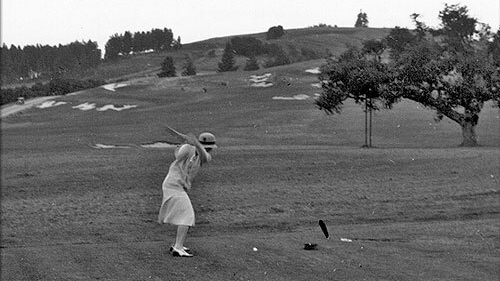 The ninth hole at Pasatiempo in 1929 (Julian P. Graham)
The ninth hole at Pasatiempo in 1929 (Julian P. Graham)
By 1991, aggressive tree planting down the right side obscured the view of the green from the tee and made the playing corridor quite narrow.
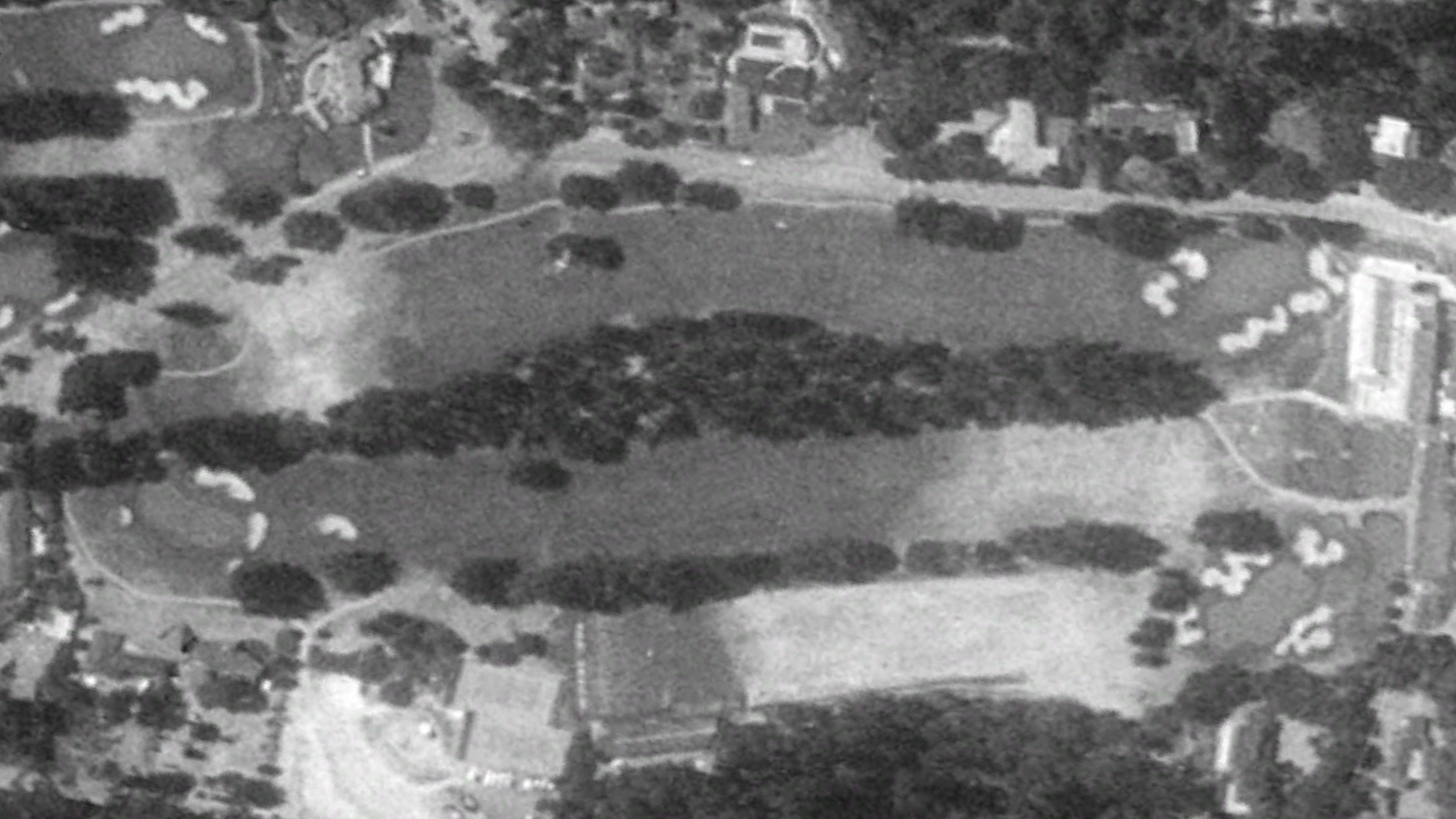 Above the ninth at Pasatiempo in 1991 (Google Earth)
Above the ninth at Pasatiempo in 1991 (Google Earth)
Over the past three decades, Pasatiempo has worked with architects Tom Doak and Jim Urbina on a series of restoration projects, which have included tree removal. Today, the ninth hole looks like this:
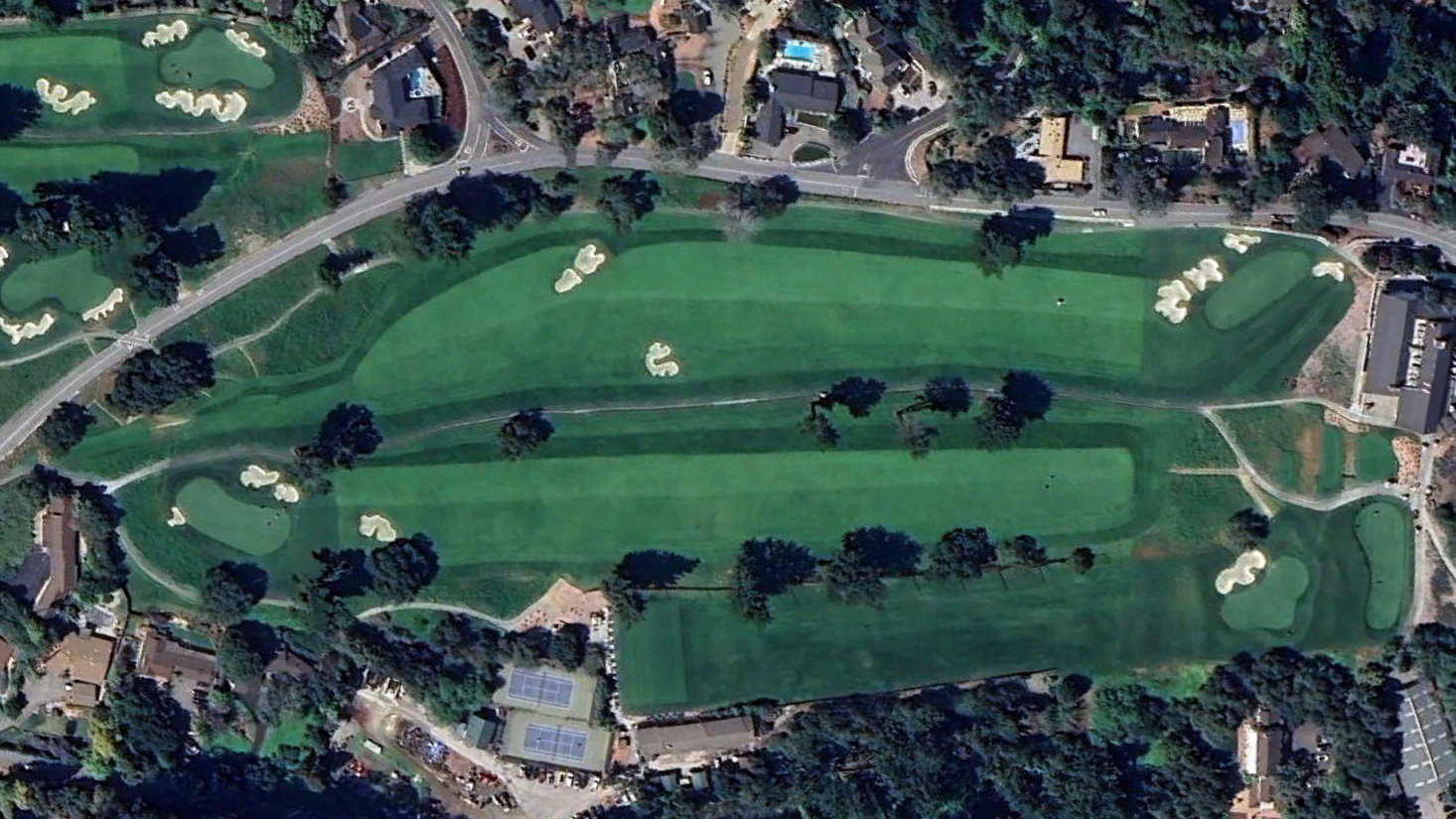 Above the ninth hole at Pasatiempo in 2024 (Google Earth)
Above the ninth hole at Pasatiempo in 2024 (Google Earth)
More trees than in MacKenzie’s day, but far fewer than in the early 90s. The hole is now closer to its original form.
Still, Pasatiempo still has a long way to go to be truly faithful to its history. Non-original trees line the sixth, seventh, and eighth hole corridors as well as the barranca on the back nine. However, there are good reasons for these trees to remain, including player safety, which happens to be Hanse’s second factor to consider in tree management.
Safety
As hitting distances increase, poorly hit shots travel farther off line. For instance, North Shore Country Club, a Seth Raynor design on Long Island, has removed plenty of trees recently. But since the course sits on a small piece of land, with many holes running close to each other, the club has kept some trees in order to prevent too many balls from landing on alternate fairways and endangering players. Particularly on the 12th, first, and 18th holes (from top to bottom in the image below), a right-hander’s slice may find the wrong fairway. Therefore, while the trees may make the holes tighter than they were in Raynor’s time, they do prevent potential injuries.
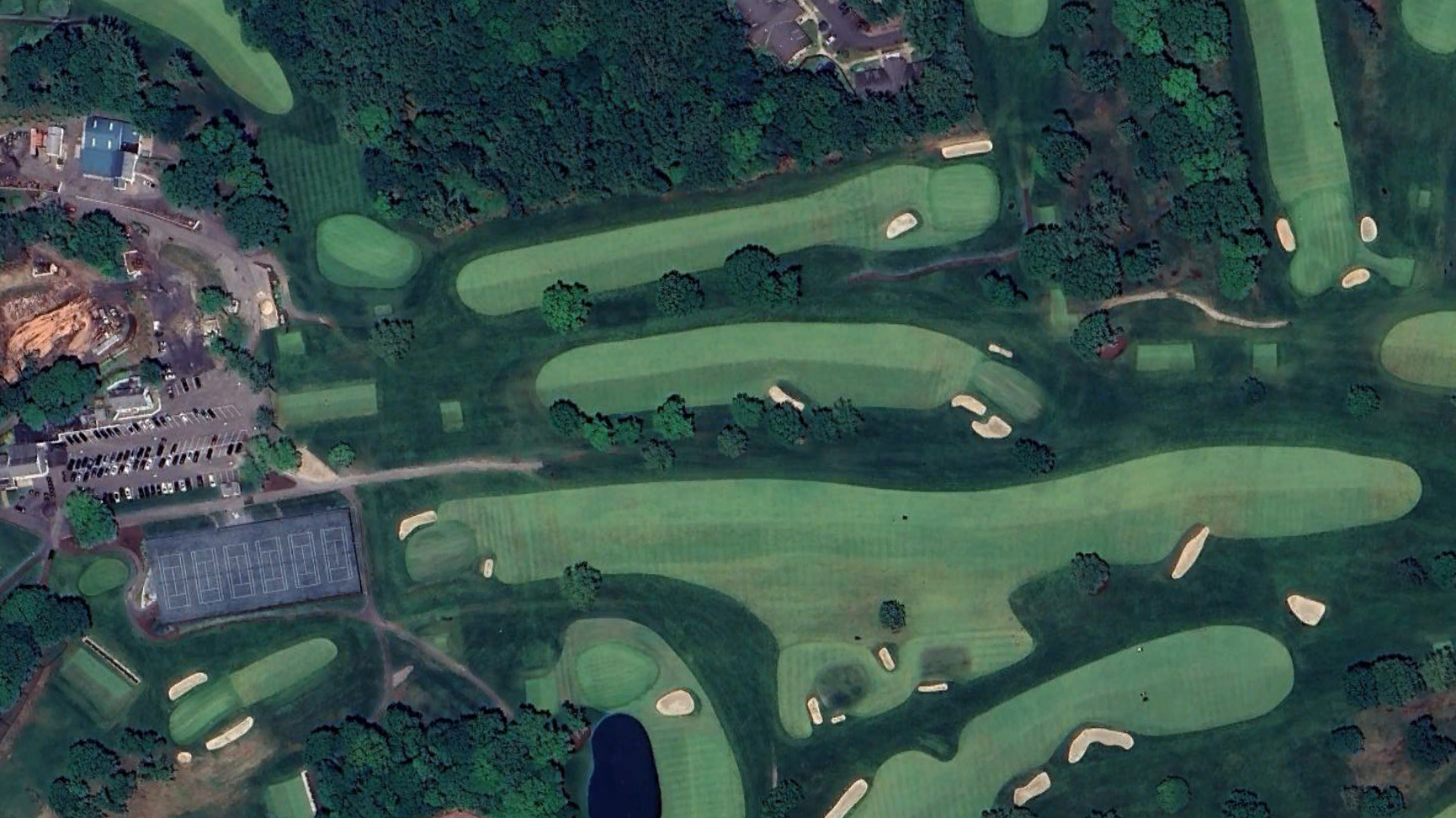 Above North Shore (Google Earth)
Above North Shore (Google Earth)
On the other hand, trees themselves can become dangerous to players. Old or diseased trees may be at risk of shedding limbs or falling down entirely, especially during storms. This type of safety concern often justifies removal.
Aesthetics
Beauty is subjective, and therefore the aesthetic value of trees is hotly contested among golfers. Advocates for tree removal tend to enjoy views of multiple holes and an unhindered sense of the topography. They might point out that the vertical scale of trees tends to subdue the viewer’s apprehension of changes in elevation and other unique characteristics of a property.
For example, at Seth Raynor and Charles Banks’s Lookout Mountain Club, a clump of trees framed the Redan 13th green and obscured part of the view down the Chattanooga Valley.
 The 13th hole at Lookout Mountain (Golf Course Gurus)
The 13th hole at Lookout Mountain (Golf Course Gurus)
Recently, Kyle Franz and Tyler Rae removed the trees from both sides of the hole, resulting in a more expansive view of the valley. The ridge-top greensite falls off in the back, creating an “infinity” effect. Such are the aesthetic benefits of tree removal.
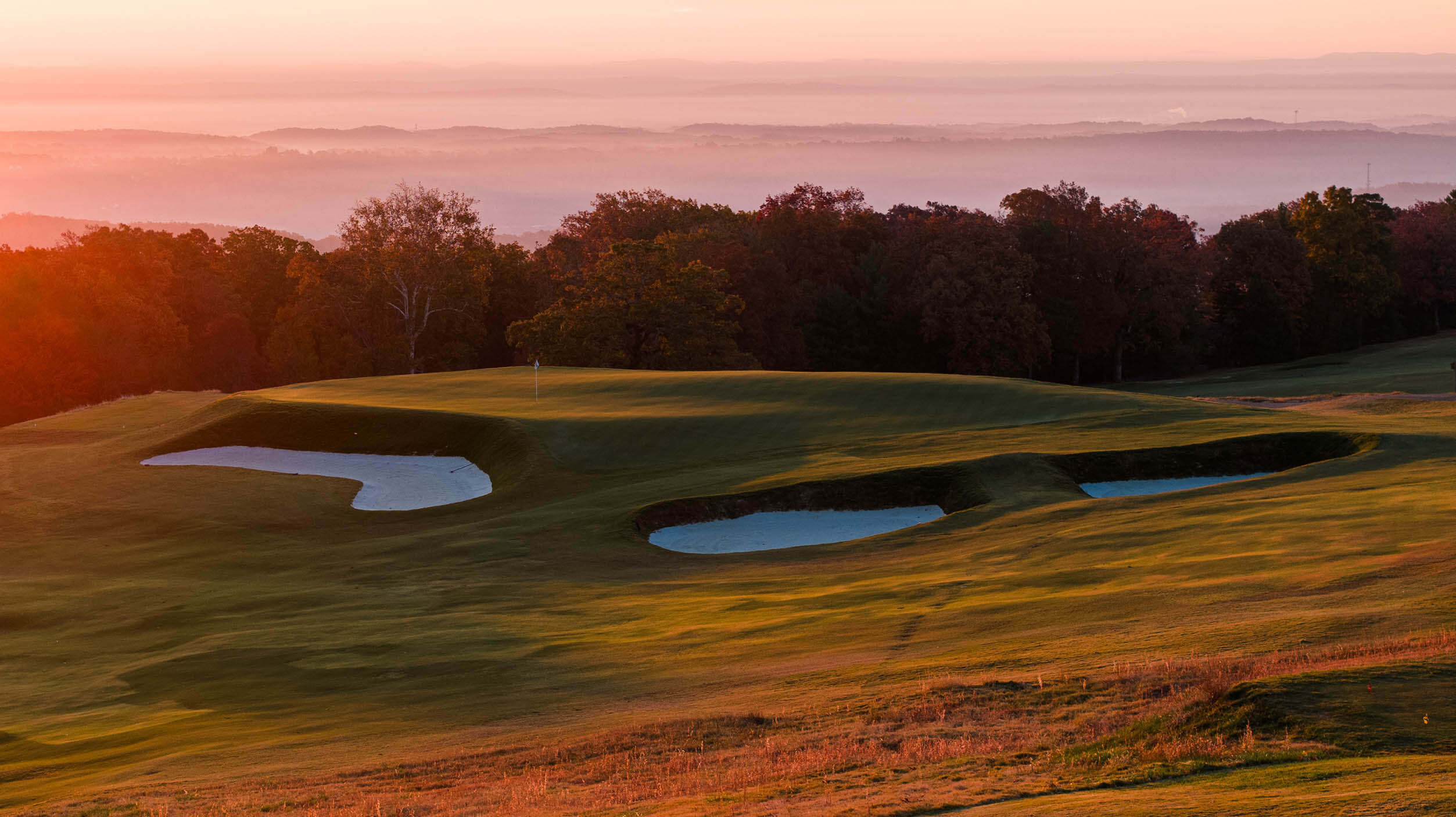 The 13th hole at Lookout Mountain (Fried Egg Golf)
The 13th hole at Lookout Mountain (Fried Egg Golf)
Others, however, see golf as a walk through nature made more enchanting with trees lining the fairways. Professional golfers in particular like the way trees “frame” holes and offer clear aiming points.
Playability
Narrow holes flanked by trees leave one way to get to the green: down the center of the fairway. Misses to either side will often result in forced pitch-outs—a standard, uncreative penalty. For these reasons, many golf architects prize width. When holes are sufficiently wide, architects can create multiple lines of play and allow for exciting recovery shots. Dense stands of trees tend to shut down these possibilities.
At Shady Oaks Country Club in Texas, the third hole, a shortish par 4, used to have a clump of trees on the right side of the approach. Whether you laid up to the wide part of the fairway or played aggressively to the narrow part, the hole asked basically the same question: can you avoid being blocked out by the trees?
 Above the third hole at Shady Oaks in 2015 (Google Earth)
Above the third hole at Shady Oaks in 2015 (Google Earth)
In a recent renovation project, the firm Ogilvy, Cocking & Mead (OCM) removed the trees, expanded a key bunker to a “U” shape, and widened the fairway on the right where the trees used to be. This created four distinct options for the tee shot: 1) play short right of the enlarged bunker, leaving a blind approach from a good angle; 2) lay up short left, the safest option, and face a longer shot over a steep swale, but with a view of the flag; 3) play aggressively up the left and end up with a short but blind wedge up the swale; or 4) take the most aggressive option, over the right bunker, and earn clear view of the flag from the best angle.
Here, the combination of tree removal, interesting land, and OCM’s understanding of strategic design has produced a golf hole far more compelling than the original.
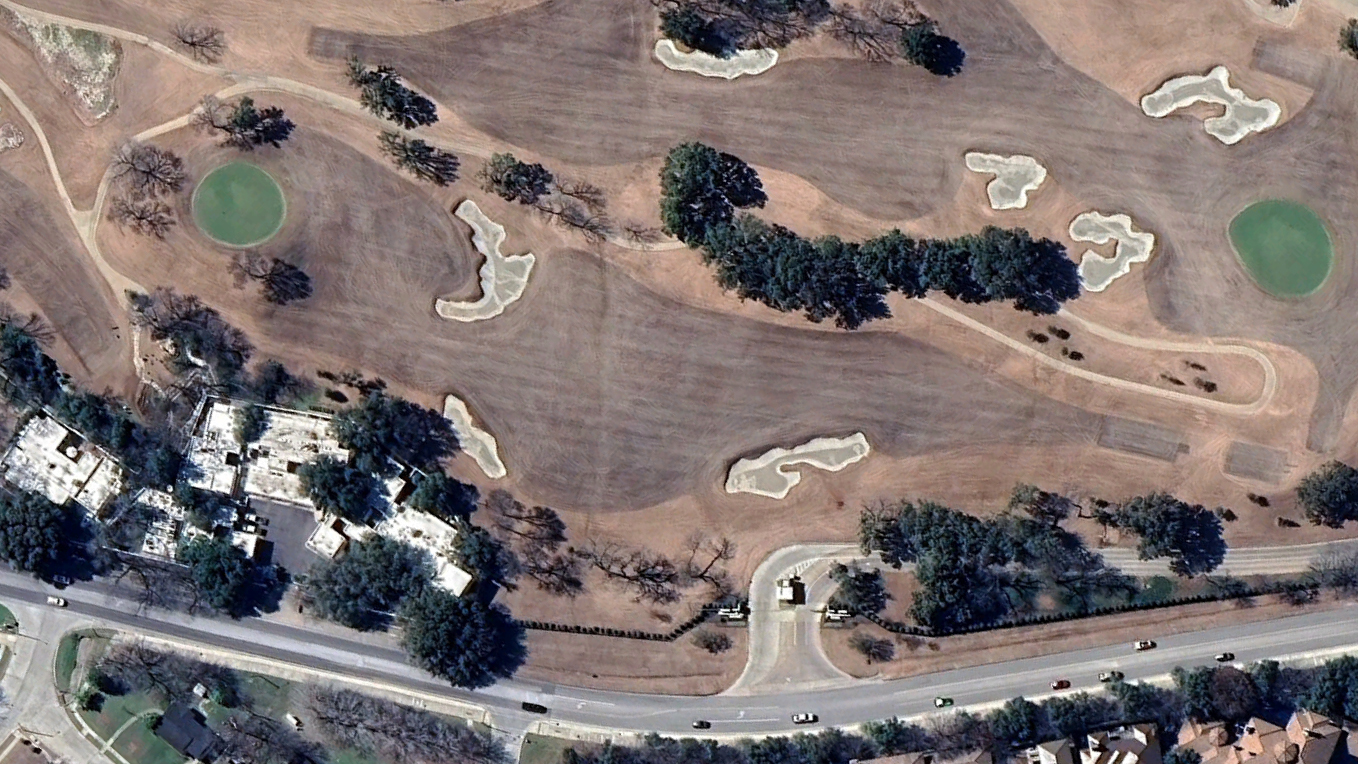 Above the third hole at Shady Oaks in 2025 (Google Earth)
Above the third hole at Shady Oaks in 2025 (Google Earth)
Alternatively, a well-placed tree or copse of trees can serve a compelling strategic purpose. On the 17th hole at Glen View Club in Illinois, another shortish par 4, a tree guards the most advantageous position in the fairway, the right side. Failing to challenge the tree and playing down the left yields an approach angle more directly over the green-side bunker. At the same time, challenging the tree and failing to avoid it may result in a 110-yard bunker shot over a steep right-to-left slope in front of the green. A single tree makes this hole.
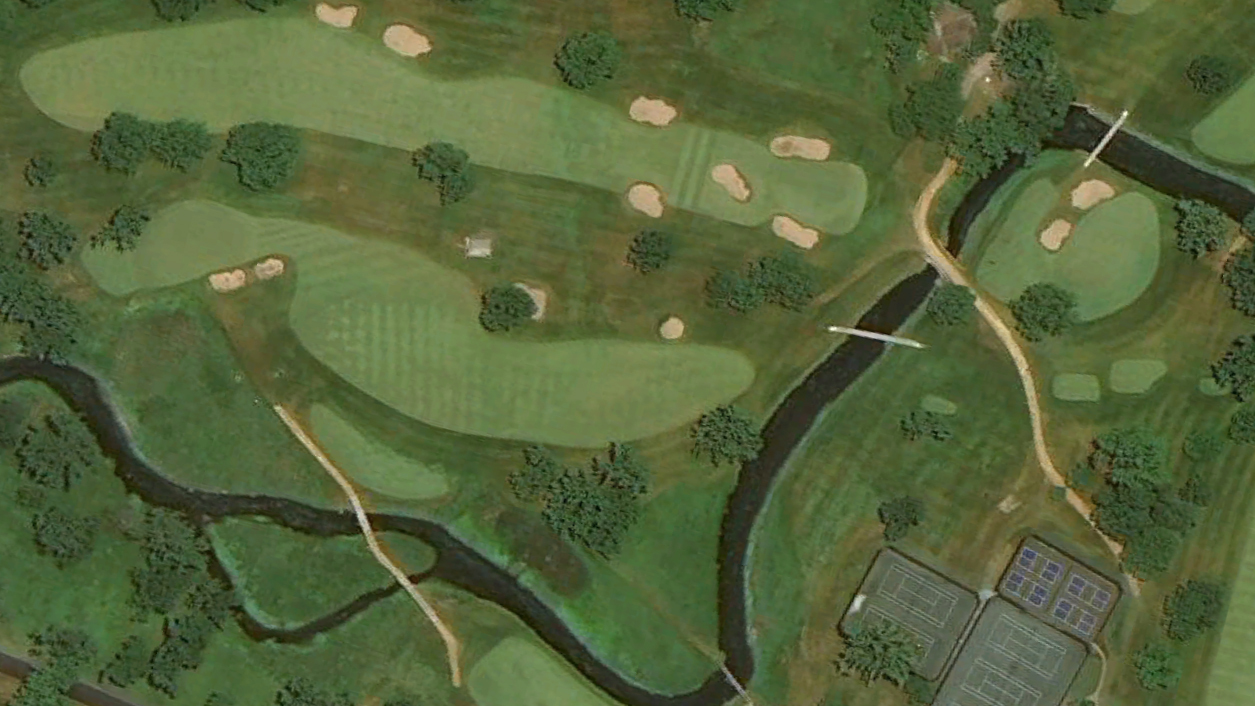 Above the 17th hole at Glen View in 2025 (Google Earth)Agronomy
Above the 17th hole at Glen View in 2025 (Google Earth)Agronomy
Hanse refers to agronomy as the most important benefit of tree removal. Trees degrade the health of turf in four distinct ways: 1) their cover prevents light from reaching the turf, 2) their roots disturb the growth of the grass, 3) they block air circulation that would be beneficial for the turf; and 4) they use water that would otherwise irrigate the grass. This is why golf course superintendents are frequently among the most fervent supporters of tree management. Plus, in this era of climate change and heightened concern for sustainability, removing trees on a golf course is not necessarily a net negative for the environment. In fact, it can help a course decrease water usage and maintain healthy turf with fewer chemical inputs.
While tree removal continues apace at many golf courses throughout the U.S. and the world, it does have its opponents: professional golfers who see trees as a worthy type of penalty, recreational golfers who appreciate the beauty of trees, journalists and TV analysts who believe that trees combat the over-emphasis on distance in the professional game, environmentalists who see trees as an important part of an ecosystem, and even architects who appreciate the strategic value of trees. It seems unlikely that a full-blown counter-trend of tree planting will emerge soon, but in the next few decades? Possibly.







